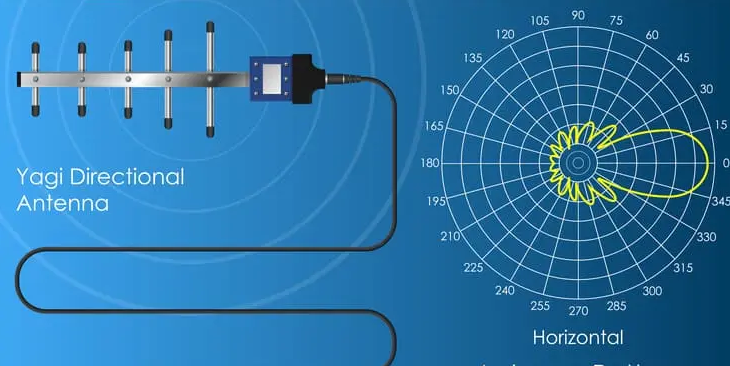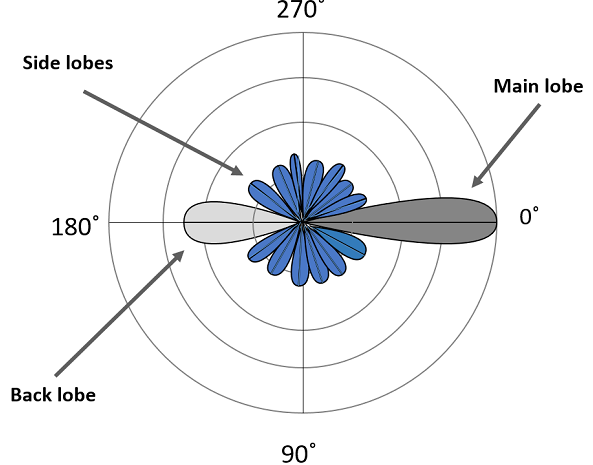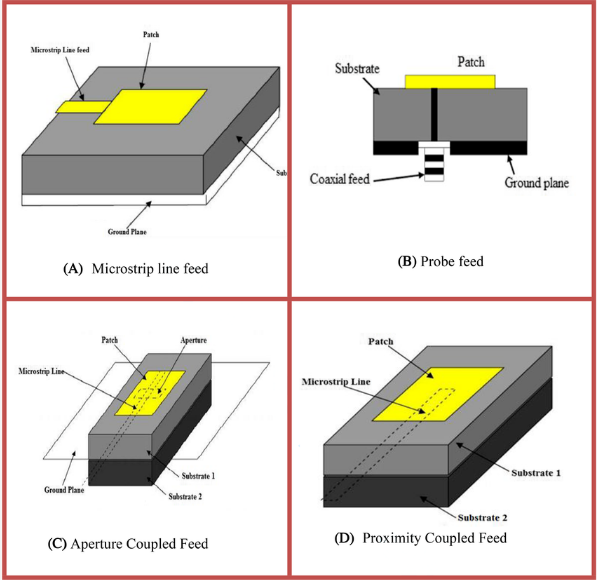Table of Contents
Fundamentals of Waveguides
Waveguides are structures that guide electromagnetic waves from one point to another. They are a critical component in a variety of fields, especially for radio frequency applications. These tools allow the energy to be transmitted with minimal loss. They work by confining electromagnetic waves in a hollow conductive tube or a dielectric medium.

Definition
In simple terms, a waveguide is a tool that guides waves, be they light or radio waves, along their length. Waveguides most commonly take the form of rectangular, circular, or even elliptical cross-sections. As already noted, they are usually made of copper in within the RF range because copper is an excellent conductor of electricity . Waveguide dimensions also determine the frequency limitation of an allowable wave and microwave range is up to 1 GHz to 300 GHz .
Key Functions in RF
These tools are used in a wide variety of RF functions such as radar, satelite and microwave transmission lines, and many others.
Signal Transmission: Waveguides provide an efficient path for RF signals, effectively minimizing loss over distances.
Bandwidth: They can also be used to regulate frequency as only certain frequencies propagate and can be useful in filtering and frequency multiplexing.
Mode: While they can propagate many modes, often waveguides are constructed to propagate only one mode.
Historical Perspective
The history of waveguides can be traced to the early years of the 20th Century with theoritical work in the 1890s by Lord Rayleigh. However practical applications using the technology for the realization of RF and microwave engineering is a product of the more recent World War II era. Its application in the realm of radar was a significant breakthrough. The early development of waveguides provided a new method for efficiently communicating with high frequency electromagnetic waves at great distances. Since its very inceptions, this technology has played an important role in the field of RF and microwave engineering and has been constantly in use ever since then.
Principles of Waveguide Design
While designing waveguides, engineers take different factors into account, including the intended application, the frequency range, and the environment. Proper design allows improving the device’s transmission efficiency while minimizing potential losses.
Conductive vs. Dielectric Materials
First and foremost, different materials are used for creating waveguides. For instance, copper and aluminum perform well in high-power applications due to their excellent electrical conductivity . Copper has a conductivity rate close to 5.8 x 10^7 S/m. These materials reflect electromagnetic waves along the inner surfaces of the device, meaning they remain inside and transfer energy.
Dielectric Materials
As for dielectric waveguides, they can be produced from the likes of Teflon — a material with lower electrical conductivity. However, its insulating qualities are significant, with the relative permittivity reaching 2.1 . As a result, it can be chosen for specific waveguides where a lower level of rigidity and weight are preferred.
Modes of Propagation: TE and TM
TE Modes
TE mode, where the electric field is perpendicular to the direction in which a wave travels, is a common mode used in waveguides . It is beneficial because the device’s losses are lower. The mode can be defined with the help of two integers, m and n, which indicate how the field changes throughout the width and height of a waveguide.
TM Modes
Transverse magnetic modes are characterized by a magnetic field that is perpendicular to the wave’s direction. As for applications and cases where the electric field has to be relatively even, these modes are the best .
Waveguide Dimensions
Waveguide dimensions are used when determining the frequency range associated with a specific device. For instance, a standard X-band waveguide, or WR-90, has dimensions of 22.86 mm by 10.16 mm. Typically it operates in the 8 to 12 GHz range.
Applications and Types of Waveguides
Modern telecommunications and radar systems rely on waveguides for directing electromagnetic waves with high precision and efficiency. Waveguide applications extend from satellite communications to military radar; they are ubiquitous in systems that depend on high-frequency signals.
Communications
In satellite communications, waveguides are used to transmit signals between the satellite and ground. Communication signals for this purpose heavily use the GHz range. One of the most commonly used satellite communication bands, the Ku band, extends from 12 to 18 GHz . Waveguides designed to deliver signals in the Ku band are characterized by low loss and low distortion; they facilitate global broadcasting and communication .

Radar
Both military and aviation radar uses waveguides to send and receive pulses of microwave energy that help track various characteristics of a target(s). Waveguides are vital components in the radar system, allowing for precise and reliable function. Air-traffic control radars utilize the L band from 1 to 2 GHz .
Types of waveguide structures
Waveguides come in various forms as dictated by the nature of the application and frequency range.
Rectangular waveguides
These are the most common and are widely used in both radar and communication. Not only are they simple in form, but they are also efficient in guiding TE modes.
Circular waveguides
Circular waveguides are used where rotational symmetry is needed, ideally transmitting circularly-polarized waves. They can also support multiple propagation modes.
Flexible waveguides
The advantages and disadvantages of waveguides made from dielectric material is the flexibility of being bent. Flexible waveguides are essential in installations that are made more complicated by the waveguide path. They, however, have a higher attenuation rate compared to their rigid counterparts.
Specialized forms for millimeter waves
Millimeter waves from 30 to 300 GHz are increasingly finding use in high-speed wireless communication and radar. Several waveguide forms have been developed for these frequencies.
Dielectric waveguides
For millimeter waves, dielectric waveguides are lighter and more flexible than their metallic counterparts. Systems such as the 5G network benefit from waveguides operating at high frequencies and bandwidths.
Integrated waveguides
These waveguides are produced on a chip and are essential in facilitating millimeter-wave communications for tiny devices. Integrated waveguides made from silicon are vital to the development of high-speed, integrated communication systems.

Characterizing Waveguide Performance
When engineers evaluate waveguide performance, they consider specific parameters like cutoff frequencies and wave velocities. They help ensure that waveguides will work as intended in certain real-life applications. The information displayed in this table can be used to gain a deeper understanding of the major characteristics of waveguides and their common types.
Understand Cutoff Frequencies
If the frequency is lower than the cutoff frequency of the waveguide and its mode band, a wave of particular frequency and mode will not be stable to propagate in it, which results in its cutoff. As for the mathematics, for a standard rectangular waveguide for which the predominant mode is TE10, the cutoff frequency of such waveguide is inversely proportional to the larger waveguide dimension. If it is equal to the X-band frequencies cut-off, which is approximately 4.3 cm, the actual frequency will be near 3.5 GHz.
Calculate Phase and Group Velocities
The phase velocity is how quickly the phase of a sinewave signal propagates across a waveguide. In many cases, it may be higher than the speed of light. Meanwhile, the group velocity allows to define how fast the envelope of a wave packet with the same frequency propagates. In case the waveguide is working at 10 GHz and has the cut-off frequency of 6.5 GHz, and the phase velocity is higher, as one can calculate:
-
Phase velocity
It shows in what way a signal phase will be transmitted across the waveguide.
-
Group velocity
It helps lean how quickly the power and information content of the signal will be provided.
Observe Standard Waveguide Dimensions and Their Frequency Ranges
With the help of dimensions measured in inches, electromagnetism specialists can be even more precise in their work. For example, WR-90 waveguide point to the rectangular size less than one inch by 1⁄2 an inch. The designations like WR-75 show the connection between the width of the waveguide and its frequency range. For example, WR-90 is commonly used during broadcasting and related processes.
https://dolphmicrowave.com//dolphmicrowave.com//www.youtube.com/watch?v=r9-m17IPOco
Contemporary and Future Implications
Technological Relevance of Waveguide
Waveguide technology has numerous current and future implications due to the advances in both telecommunication and radar systems that continue exceeding previous technological limitations.
Waveguides in the Millimeter Wave Industry
The frequency bands in the millimeter band range widely and are classified as those having frequencies between 30 GHz and 300 GHz. With this band on the rise, companies and technology providers are now attributing to the growth the high-speed wireless communication that is possible due to advancements in the so-called millimeter wave industry. With that in mind, there is an advancement in millimeter wave industry requiring waveguides since they can transmit frequencies of a high magnitude with less loss compared to common long cables.
New Materials and Waveguide Technologies
Waveguide technology has highly advanced over the years, with the latest developments including the use of smaller, more efficient, and more widespread waveguides. For instance, waveguide technology is accurately used in high-frequency circuit design through the use of integrated waveguides. This development is critical since most millimeter wave applications require smaller waveguide sizes. These new materials used in integrated waveguides may include silicon and gemanuim or even polar asteroid which would further permit embedding of the waveguides into printed circuit boards.
The Simplicity and Convergence of Waveguide Technologies
The current trends have established waveguide technology as an essential component in high-speed data transmission in a wide millimeter spectrum of frequencies used in 5G communication. There are now designs of waveguides connecting antenna arrays to transceivers which are essential in the 5G base stations. With future expectations, waveguide current and future implications may develop into 6G and other future communication specifications that use even more extended frequency ranges requiring more sophisticated waveguide transmitters.







